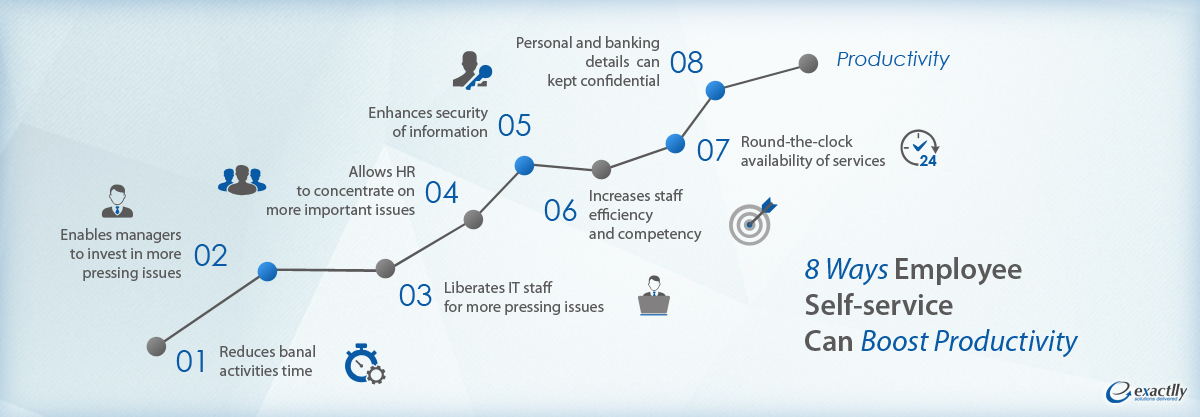5 Key Reasons Behind Employee Disengagement

Everyone expects their employees to give their best shot at work. It’s a valid expectation, but the reality is far from it. Employee disengagement is a huge problem in business today, and it seems to be growing rapidly.
Studies indicate that an average of 10-15% of employees in organizations are disengaged. It effectively implies that at least 1 out of every 10 employees you have is unproductive at work. To deal with the issue, you need to understand the reason behind employee disengagement and how to tackle them:
1. Misconception about work expectations
One of the most common reasons behind employee disengagement, the large part of the blame lies with the management. A failure to clearly explain the work goals to the employees leaves them confused about what they have to achieve. Even though initial motivation might overcome this, a consistent pattern of mismatched expectations would ultimately result in demotivated and disengaged employees.
Another reason is the intentional or unintentional failure to effectively describe the job profile during hiring. Many employees join their organization with high hopes about their work, only to be disappointed with the ground realities. Soon, they become disengaged from their job.
Solution: The management must be clear about what they are promising. It must be remembered that a job requirement is not an advertisement, and they don’t have to gloss over. At the same time, employees must be communicated efficiently regarding their roles and responsibility. They must be made aware of the company’s expectations from them, so that they can perform accordingly.
2. Lacking the skillset required
Another common reason, the fault in this case lies with both the employees and the employer.
Employers often do not have an efficient hiring process, preferring employees with low salary expectation instead of those that actually fit the job. At other times, employees are assigned to projects that do not match their skillset.
In both cases, workers soon get disengaged from the job because they do not think they are the right fit for it. In fact, studies reveal that as many as 80% employees feel they are not the right person for the job assigned to them.
At the same time, employees too fake their skillset during hiring, in order to secure the job anyhow. However, once they are hired, they realize that their work is beyond their capabilities. Again, due to lack of necessary skills, they are unable to perform and become disengaged.
Solution: There must be a right match between skills and requirements. This must begin right from the hiring process, where only candidates that completely fit the profile must be selected. Beyond that, employees that match the project requirement must only be assigned to that project. Many vendors offer efficient HRMS tools with functionality that would make this easier for you.

3. Alienation from the company’s vision
In many cases, the upper management or even immediate superiors do not deem the employees worthy of being part of the company’s vision. Most employees finish their daily tasks without having any stake in the larger picture.
In human resource management, it is very essential for employees to feel a sense of belonging and loyalty towards the company. If they are denied the opportunity to be part of the greater plans of the company, they would naturally become disengaged.
Solution: Ensure that employees not only understand the principle and vision of the company, but also take an active part in realizing that vision. Management must remember that a company is made up of its employees. Every single worker must be encouraged to contribute in the overall growth of the company.
4. Hesitation from management and colleagues
Perhaps the most common reason behind disengaged employees is the lack of communication between employees and everyone else. The problem could stem due to two reasons. First, the management and superiors are not interested in giving attention to the doubts and hesitations of the employees. The lack of guidance and proper communication alienate the employees further.
Second, a poor work environment could be attributed to the disengagement of employees. Particularly, poor communication and relations with colleagues often lead to employees feeling disengaged from the job and the workplace. It usually happens in organizations where inter-personal relationships are ignored and there is a poor workplace culture.
Solution: Management needs to create and nurture a healthy environment in the office. Communication needs to be encouraged, both vertically and horizontally. More than anything, employees must be encouraged to form a bond among them so that each person feels more connected with others and the company.

5. Lack of interest in the job
Sometimes, the reason is the most obvious one. It is often that the employees are simply not interested in the job anymore. There are a variety of factors that could be behind it.
It may be that the employee has found a better a job opportunity or is looking for a career change, and finds it futile to give his/her best to your company. At other times, employees suffer from inherent flaws of distraction and laziness. A part of that blame goes to the hiring process, but for most part, the employees are solely responsible for this.
Solution: There is no easy way out of this, except terminating the employee. It might sound harsh, but firing an employee who is willingly unproductive is far more efficient and easier than taking corrective measures.
Conclusion
Employee disengagement is one of the key issues that must be tackled as soon as possible. Not only does it causes loss of time and capital, but also affects the most important resource of your company: the employees.
Also, employee disengagement is infectious, so it must be solved before it affects more people in our organization. The reasons discussed here would give you a better insight into solving them.






